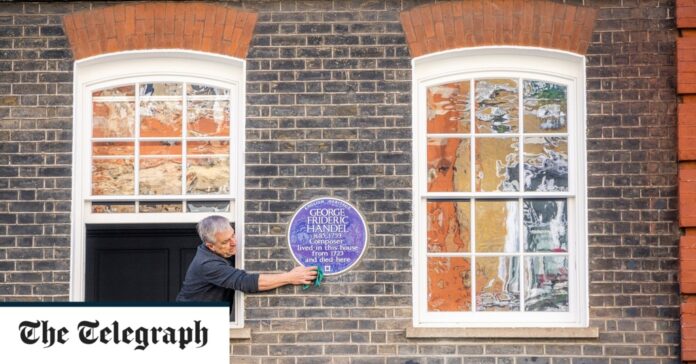As the government announces plans to roll out blue plaques beyond London, we delve into the past and future of the walking-tour stalwart
It was 1968 and an American pop guitarist had recently moved into the third-floor flat of a Georgian townhouse in Mayfair. But despite his global fame, the music fans who rang the doorbell at 23 Brook Street were not here for Jimi Hendrix. In a strange synchronicity of the city’s history, Hendrix’s flat was next door to the former home of another musical virtuoso: composer George Frideric Handel, who lived at number 25 Brook Street for 36 years from 1723.
“Fans hoping to see Handel’s house would frequently ring next door,” says Simon Daniels, director of the newly restored Handel Hendrix House, a museum on the site of two of the most famous blue plaqued homes. “Handel’s blue plaque was ambiguously located back then,” he continues. “Visitors, you can imagine, were rather surprised at the sight of Jimi Hendrix opening the door!”
Handel’s blue plaque was the first awarded to a musician, and was erected on the townhouses in Brook Street in 1870 by the London Society of Arts. Hendrix, meanwhile, was the first rock star to be awarded an official blue plaque, installed on the three-storey townhouse by English Heritage in 1997.
The world’s oldest historical marking scheme, ‘blue plaques’ (which may or may not be blue) are permanent signs installed on sites in England to commemorate links between the location and a famous person, company, event or a former building which occupied the site.


